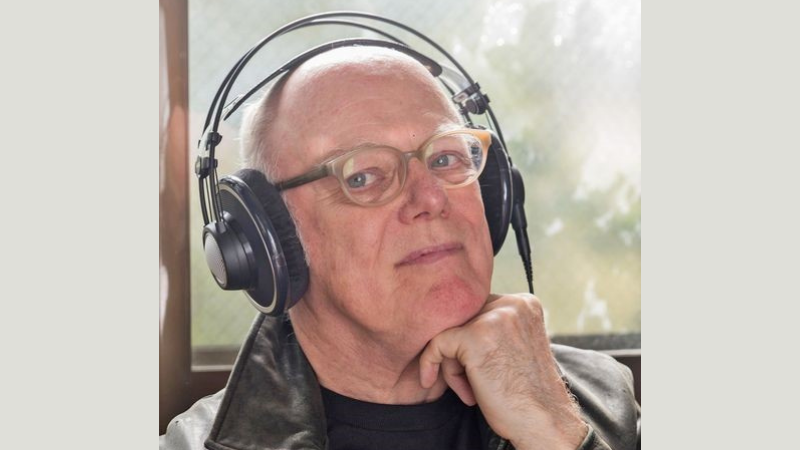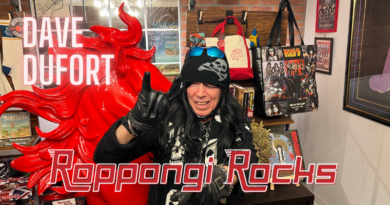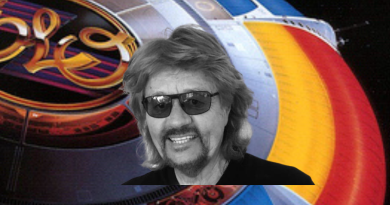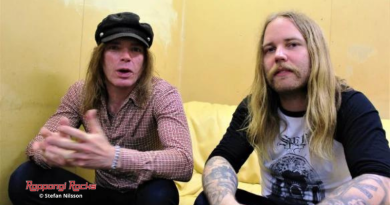Five Records That Changed My Life, Part 19: Morgan Fisher
British musician Morgan Fisher was a member of Mott the Hoople in the 70s and toured with Queen in the 80s. The keyboard player and composer, who is based in Japan since 1985, has remained active as a solo artist and with various projects and collaborations, including working with Yoko Ono. In recent years, Morgan has participated in several Mott the Hoople reunion tours. Morgan talked with Roppongi Rocks boss Stefan Nilsson about five of the albums that have mattered the most to him.
Various Artists “Rhythm And Blues” (1963)
“Sonny Boy Williamson, Little Walter, Jimmy Witherspoon, Willie Dixon, Memphis Slim, Howlin’ Wolf, John Lee Hooker, Muddy Waters and more – all on one album! And as it was on the Pye Golden Guinea Records budget label it was only a guinea (21 shillings) while most albums were 30 shillings or more, so on my meagre paper round wages I could afford that! I’d only ever heard very occasional blues tracks on BBC radio, usually drily presented as a kind of exotic example of US folk. These raw, classic performances literally scraped the inside of my brain and prepared me to be able to handle seeing Hendrix just three years later! Inevitably I lost the LP much later, and decided to buy it again a few years ago, used on eBay. BIG SURPRISE: the sleeve notes, and compiling, were by Guy Stevens – the man who put Mott the Hoople together!”
Booker T & The MGs “Soul Dressing” (1965)
“Of course, it was Booker T’s first single ‘Green Onions’ that blew the minds of hundreds of us young would-be organists as it coolly breezed out of speakers in clubs and boutiques all over London when I was a teen. But their second album took the magic further, beyond the straight Stax soul/funk into deep, deep sounds. It was like they were developing the creative use of studio techniques even faster than The Beatles were, and with more soul and gravitas, and it still hooks me in today. Produced by Jim Stewart – the ‘ST’ of ‘Stax Records’ – there are keyboard and guitar sounds on there that I’d never heard before. Two standout tracks: ‘Chinese Checkers’ and ‘Plum Nellie’. And I can’t resist giving a shout-out to Billy Preston’s equally thrilling organ sounds on ‘The Most Exciting Organ Ever’ from 1964!”
The Mothers of Invention “Freak Out!” (1966)
“I bought this in late ’66, around the time I first saw Hendrix playing – in a pub. That was a very special year. I was 16, just starting to play live, and my mind was so irrevocably blown just by the music that I never ever felt the desire for drugs. OK, I still like a glass of wine on occasion. Interestingly, neither did the madcap genius Frank Zappa. I’d never seen a gatefold double album before, and this one was bubbling over with a kaleidoscopic montage of astonishing music from ultra-avant-garde atonalism – in memoriam Edgard Varese, who’d died a year before this release – to lobotomised doo-wop on ‘Go Cry On Somebody Else’s Shoulder’ and everything in between. I lapped it all up voraciously (most of my friends just liked the funny bits). This album certainly influenced my production of the Miniatures compilation album in 1980, which had 51 completely different tracks, none longer than a minute.”
Gabor Szabo “Dreams” (1968)
“Ever bought an album just because the cover was amazing? I fell in love with this sensuous Beardsley-style cover and grabbed the album without even listening to it, which I could easily have done in the classy mahogany-panelled record boutique I found myself in. My jaw hit the floor when I played it at home. Gabor, who I’d never heard of, turned out to be a drug-addicted Hungarian guitar genius, who died at 45 having ruined his health. This is by far his best album, the others could get a bit sweet and muzaky with covers of groovy 60s hits, as it blends his folk roots and jazz prowess incredibly well, with an air of mystery and even menace at times, supported by riveting strings, brass, and amazing percussion. It was also in my honest opinion the best piece of work by his US arranger/producer Gary McFarland. He died of drugs at age 38… Sigh. There are moments on this album where Szabo’s eerie bending notes slide into weird feedback – on an acoustic guitar! OK, I guess it had a pickup. I still listen to it more often than any other album, ever. And it must be on vinyl to hear every detail of the vibrant acoustic sounds.”
Joe Walsh & Barnstorm “The Smoker You Drink, the Player You Get” (1973)
“Brilliant title! Joe was part of a triple-whammy day in my life – my first gig with Mott, my first gig in the USA, and the first band I saw play in the USA. He opened for us on July 27, 1973 at the Aragon Ballroom, Chicago. He and his band Barnstorm were at their absolute peak, riding high on their stomping hit ‘Rocky Mountain Way’. Joe was a total sweetheart: when I said, ‘I hear we’re all staying in the same hotel tonight’, he grinned mischievously and said, ‘That’s kinda dangerous!!!’ He was the best guitarist I’d seen since Hendrix – and that includes Clapton, Alvin Lee, Rory Gallagher, etc – plus his songs were magnificent and wide-ranging in styles. He was also a wizard on analogue synths, adding gorgeous rich layers to some of his slower songs, on his later album ‘So What’ he even plays a luscious synth version of Ravel’s ‘Pavane of the Sleeping Beauty’. We did several gigs together on that tour and I watched with utter delight every night, as the band played their hearts out brilliantly with all the power of a tidal wave but not an ounce of aggression. This album brings it all back. That’s my kind of hard rock – and I sincerely hope Mott managed to create some of that too.”







